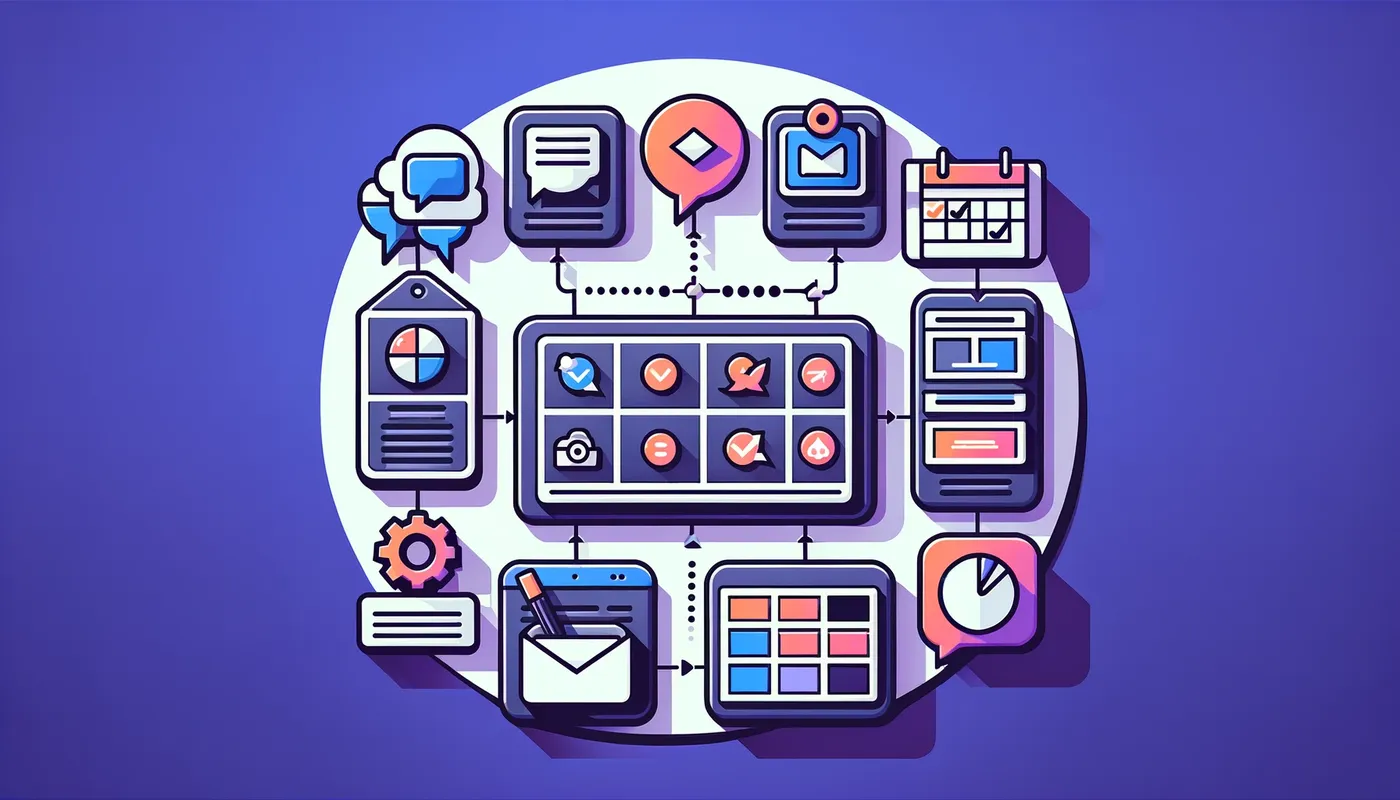
For a website to succeed, a great development process is crucial. Understanding and managing the detailed steps involved calls for a thoughtful strategy and a clear grasp of the entire design process.
Since the number of web developers in the United States is expected to grow to over 205,000 by 2031, it’s essential to stand out as a professional with a reliable website design process that encourages feedback and alignment with client objectives.
Let’s delve into the fundamentals of the web design process to help you excel in your craft!
How To Design a Website
Designing a website is a challenging but rewarding task. It needs careful planning and focused work. Dividing it into key stages helps keep the process organized and leads to a successful website project.
Here are the fundamental website design process steps:
1. Research and Planning
Before you dive into the design itself, it’s important to have a solid foundation with astute research and planning. This can enhance your organization, management, and execution as you progress.

Start by understanding the client’s goals such as:
- Who is their target audience?
- What do they want to achieve with their website?
- What are the benefits of their existing website? What do they want to improve?
- How do they want visitors to navigate the site?
- What aesthetics and functionalities are they expecting from the new site?
- Who are their competitors?
- How soon would they like to launch the website?
- What kind of experience do they want their audience to have when navigating their site?
You can also create a detailed project brief that outlines the sitemap, key deliverables, timeframes, and budgets, among other important aspects.
This will help you understand your client’s overall vision which is paramount to building a successful website.
For example, if you’re designing a website for an e-commerce business, research the behavior of its target demographic, competitor websites, and industry trends. Then, use these insights in your design.
Your brief can also be used to check for alignment between you and your client. By encouraging your client to go over your brief, they can let you know if there are any discrepancies between what you understood and what they actually want.
This phase requires the collection of information and actionable insights. You can conduct user interviews, surveys, and competitor analyses to understand market trends and user needs.
This will enable you to create a website that is visually appealing and aligned with the client’s objectives.
2. Sketching and Wireframing
Once you’ve outlined the scope of your website, the next step is to translate conceptual ideas into tangible designs through sketching and wireframing.
These low-fidelity visualizations will help you map out the website’s layout and functionality, thus providing a clear visual roadmap to guide you during the design process.

Ensure you explore multiple options and design concepts. Foster a collaborative environment where team members can freely exchange ideas. This will help you build a more user-friendly interface and a functioning website as it lets you consider different perspectives, potential problems, and solutions.
3. Design the User Interface (UI)
Once you’ve laid the groundwork for your website with research and initial designs, start crafting a user interface (UI).
Pay close attention to typography, imagery, and color schemes. These will enhance the client’s branding while influencing the overall user experience and aesthetic appeal of the website.
Incorporating the brand identity into the UI will also help maintain consistency across all elements, resulting in a polished look and feel.
You can also benefit from creating a design system, style guide, or a similar document to outline the design principles and visual elements. This will serve as a reference for different teams so that they maintain consistency across the various sections of your website.
4. Prototyping
Creating a prototype is a pivotal stage that will transform your static designs into an interactive experience. It involves testing the flow and functionality of your website design before you apply the final touches.
Simulating the final product before you launch can help you optimize resources as it facilitates early feedback from different stakeholders, which also ensures a more user-friendly and solid interface.
You can also focus on micro-interactions as these subtle animations or transitions can significantly enhance the overall user experience and greatly contribute to the website’s usability.
Always consider how different elements in your design will respond to the user’s actions. This stage will provide a preview of the final, dynamic user interface.
5. Testing and Iteration
Any initiative that requires creative and functional results needs to be tested. During web development, testing and iteration help you refine and adjust the initial design.

It entails gathering feedback from team members and stakeholders so you can identify and address potential issues early on. You can also use systems such as GitHub to track changes and encourage seamless collaboration—crucial aspects for testing and tweaking websites. Slack can also enhance communication and enable collaborative improvements to your design.
These iterations will ensure that your final product is successful and meets the design standards and overall expectations of your clients.
After presenting your work, encourage your clients to conduct usability testing. Consider using tools like Feedbucket.
This period of evaluation will allow you to check various aspects such as the website’s accessibility, usability, and responsiveness across various devices and browsers. Optimizing the website is crucial as websites are typically redesigned primarily because they are not responsive on all devices. It is also the top reason why visitors abandon websites without navigating through them.
Inculcating a user-centric approach to testing will help you obtain valuable insights into how real users will interact with your design. You can then identify and address areas for improvement. Such details may not be apparent through internal testing alone so user feedback is crucial to the overall design process.
Delimiting the Workflow and Maintaining Order
In addition to clear communication and feedback loops, maintaining a website design process checklist and delimiting the workflow can be a game-changer for a successful website.
As is the case with any large project, breaking chunks of work into smaller steps offers several benefits such as:
- Better efficiency
- Greater productivity
- Optimized resource allocation
- Higher levels of creativity
This is crucial for ensuring that the design process takes place smoothly.
Following specific steps can also help you maintain positive client relationships while building trust and encouraging client involvement. All of these aspects can ensure that you and your client benefit from a pleasant working experience and an effective website.
Tools That Aid the Feedback Process
Throughout the process, we cannot overstate how important client feedback is. Maintaining open communication throughout helps you avoid major rework down the road while ensuring client satisfaction.
Many web developers and designers struggle with feedback because clients and tech professionals have their own communication styles. In addition, it’s difficult to provide specific feedback for websites that have several pages and countless small details.
Many developers and designers rely on third-party tools like Feedbucket to streamline, organize, and clarify input from clients. Since users can leave notes directly on the web pages being developed, the app reduces ambiguity by a large margin. It also provides more flexibility by allowing reviewers to use screenshots, recordings, and key details when leaving their observations.
Save time, avoid frustration, and maintain clear communication with clients. See how Feedbucket makes the website design process easier by signing up for a 14-day free trial.
Conclusion
Mastering the website design process requires clear communication, a strategic approach as well as planning and testing.
Prioritizing client collaboration, dividing the workflow, and maintaining order can help you navigate the world of web design with confidence, stellar results, and happy clients.
While reviewing your design process, consider tools like Feedbucket to enhance results, improve client relationships, and save time.
